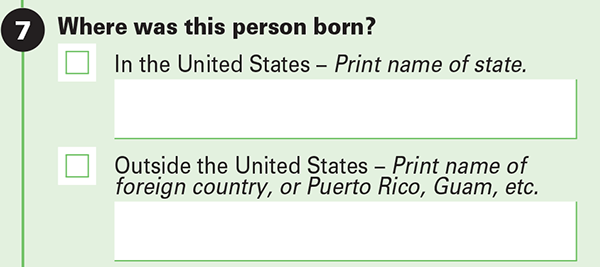Ensure Equal Opportunity
We ask about people in the community born in other countries in combination with information about housing, language spoken at home, employment, and education, to help government and communities enforce laws, regulations, and policies against discrimination based on national origin.
For example, these data are used to support the enforcement responsibilities under the Voting Rights Act to investigate differences in voter participation rates and to enforce other laws and policies regarding bilingual requirements.
Educate Children
We ask about individuals' place of birth, citizenship, and year of entry in combination with other information, such as language spoken at home, to help schools understand the needs of their students and qualify for grants that help fund programs for those students (Elementary and Secondary Education Act of 1965). Statistics on how many foreign-born children depend on services through schools help school districts make staffing and funding decisions.
Understand Change
Researchers, advocacy groups, and policymakers are interested in knowing whether people of different races or countries of birth have the same opportunities in areas such as education, employment, and home ownership. These data may also help to identify communities with large refugee populations that qualify for financial assistance (Immigration Nationality Act).
Data Visualization: U.S. Foreign-Born Population
Click the image to view the interactive data visualization.

[Source: U.S. Census Bureau, 2018-2022 American Community Survey, 5-Year Estimates, B05006]










